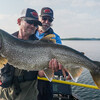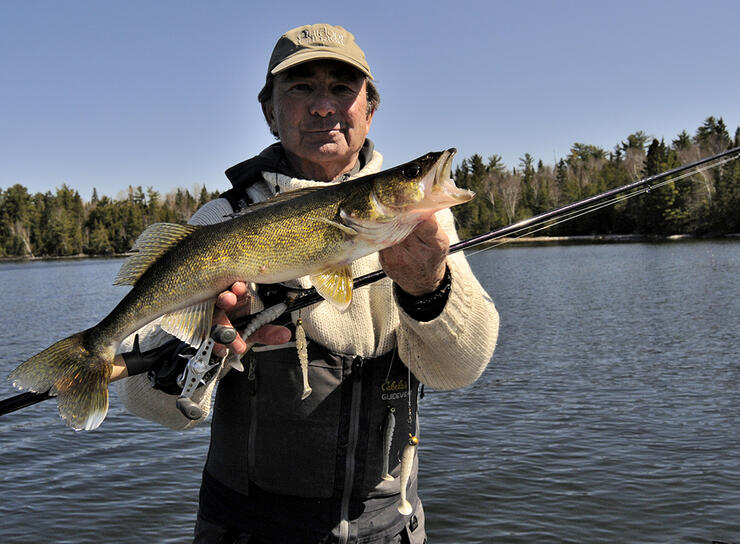
Tips for fishing with umbrella rigs in Northern Ontario
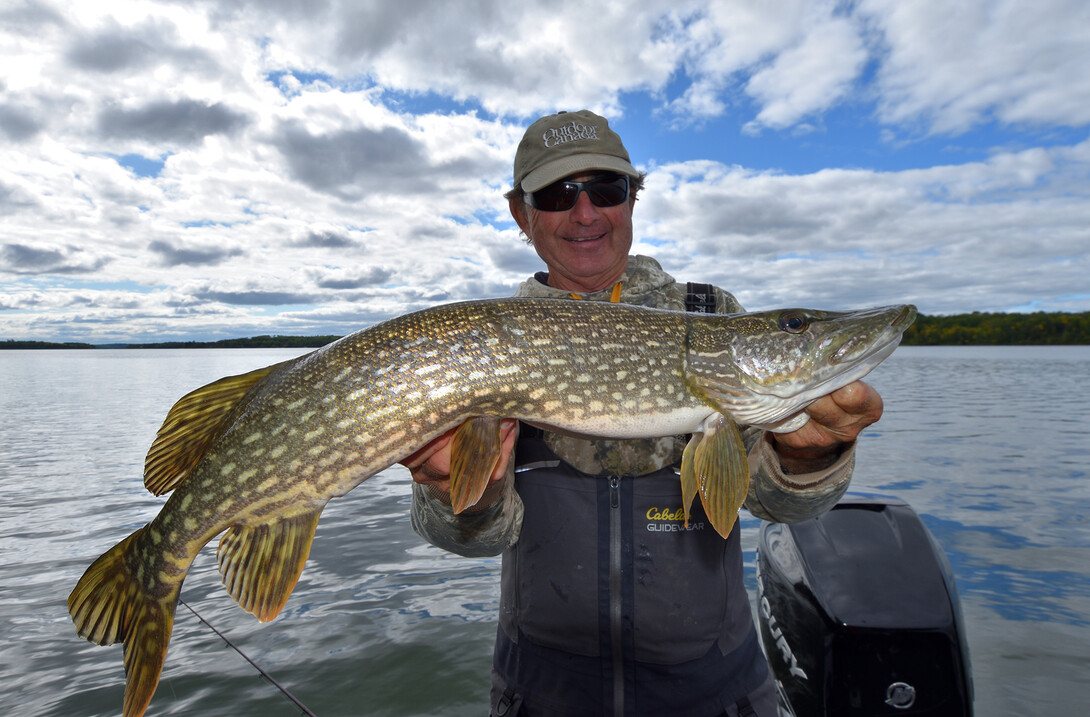
When you go fishing in Northern Ontario this season, don't forget to bring an umbrella because it is going to rain smallmouth bass, walleye, and northern pike even when the sun is shining brightly. I am talking about umbrella rigs, of course, the weirdly unique lure arrangements that look like the wireframes of their namesakes. You're allowed to have four hooks on your main line in Ontario, so in-the-know anglers typically attach a soft plastic swimbait to the end of each wire arm. That way, when you cast it out and reel it back it to the boat, it looks like a school of ciscoes, shiners, smelt or perch flashing, fluttering and swimming in the water. To the fish, however, it looks like dinner.
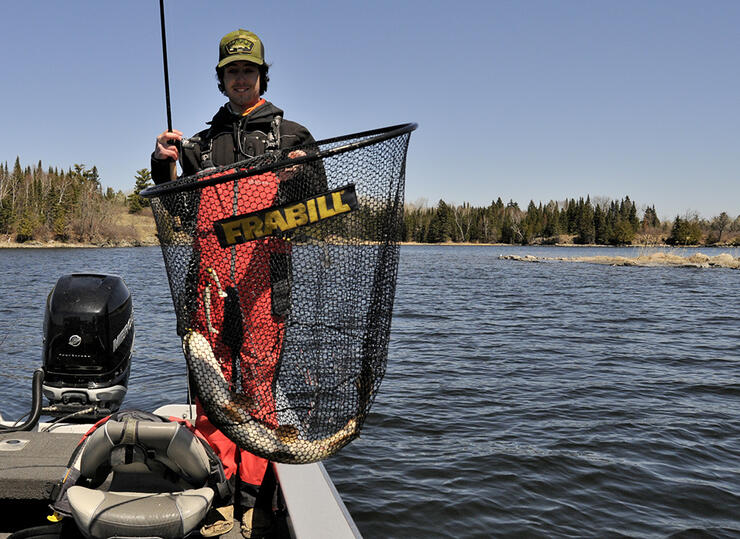
My grandson Liam is an umbrella rig fishing fool and he put on a clinic of epic proportions the other day, catching smallmouth bass, northern pike, and walleye like crazy, eventually forcing me to drop what I was using, pick up a similarly rigged umbrella rod and join in the fun.
"The best umbrella rig rod is between 7' 6" and 7'11" and has a medium heavy to heavy action with a moderately fast or fast tip," Liam says. "I like the 7'6" medium heavy action 13 Fishing Omen Black for smaller and lighter rigs and the 7'11" heavy action Omen Black for bigger and heavier ones." He adds, "You want the length so you can make long casts and the power to fight big fish. Plus, the four jigs and swimbaits are bulky, so the moderately fast/fast action tip bends when you're fighting a big fish and keeps it pinned. A good 200-size baitcasting reel with a mid-range retrieve ratio balances the rod perfectly. My favourite speed is 6.1:1."
While many anglers spool their umbrella rig rods with a good 45 - 60 pound braided line like Sufix 832, others, like Liam, prefer using a premium 25-pound test fluorocarbon line like Maxima. He says it is a trade-off between the thin diameter, no-stretch properties of braid and the abrasion resistance of fluorocarbon.
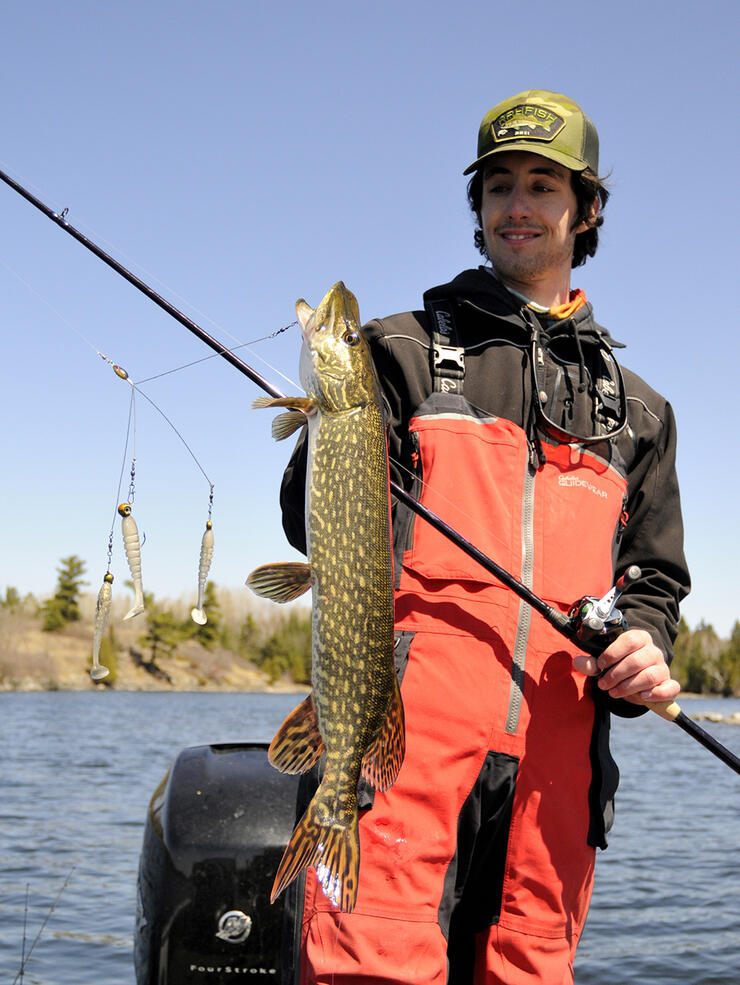
As for swimbaits, Liam sticks with natural-coloured minnow lookalikes with Storm 360s, X-Zone Swammers and Bass Magnet Shift 'R Shads topping his list of favourites. But there is a "must do" way to rig them properly.
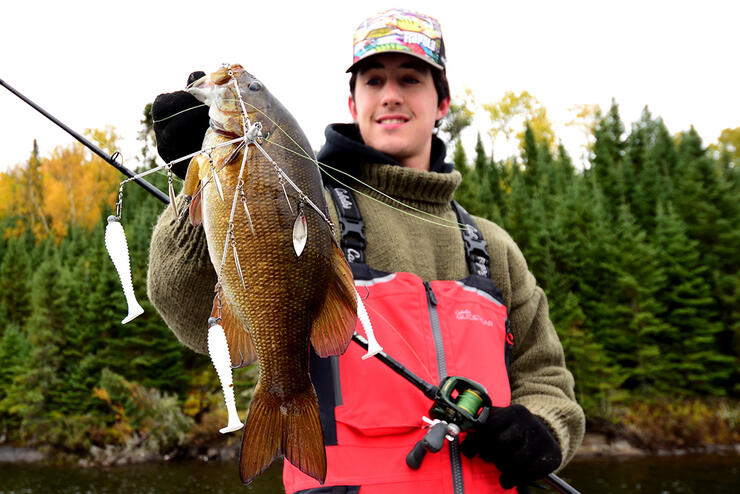
"I put the swimbaits on 1/8-ounce jig heads on the top two arms and 3/8-ounce jigs on the bottom two," he says. "I use the same size swimbaits, but putting the lighter jigs on top and the heavier ones below, balances the setup properly. I often experiment, too, by putting a different coloured bait or bigger bait on one of the bottom jigs, so it stands out from the crowd and gives the fish something to key in on."
When I asked Liam about the best time of year to fish an umbrella rig, noting that he seems to catch more and bigger fish when the water is cold and clear in the spring and fall, he agreed with several caveats.
"I really like using umbrellas when the fish are on deeper humps, feeding on minnows. You can just search the rock piles with so much accuracy. They still work well in the summer, too, but I think the bass, in particular, are looking down and feeding on crayfish," he says. "I really want to spend more time this summer fishing umbrella rigs in clear, cold lake trout-type lakes. Those fish are always eating minnows so I am sure they'll work well, and no one else is using them then, so the fish haven't been conditioned to avoid them. I also can't believe how many northern pike and walleye I catch on these things. Everyone thinks you have to fish a jig and minnow over the side of the boat to catch walleyes, but they crush umbrella rigs."
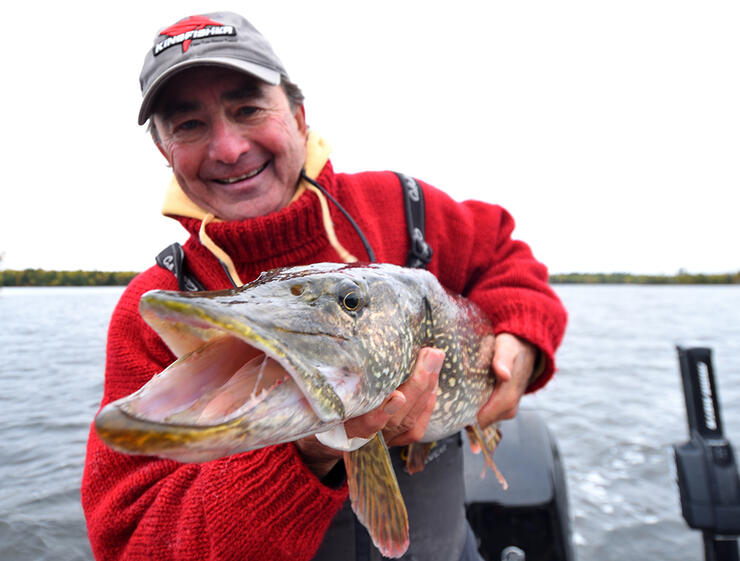
"The important thing is to make a long cast and let it fall to the bottom. Then, get it swimming slowly and then try to keep it within a foot or two of the bottom during your retrieve. If you feel it go funny for a split second, speed up your retrieve or give it a few pops with the rod tip because a fish has likely slashed at one of your baits. By popping or speeding it up, you can make the rig look like a spooked school of minnows and it will trigger the fish to bite. Another trick is to keep your rod tip down toward the surface of the water so that if you bang the bottom you can lift it up and avoid snagging. That is another benefit of using a long rod - it gives you better control over changes in depth."
With this in mind, if the action slows and you want it to rain smallmouth bass, walleye and northern pike this season, grab the umbrella.
Recommended Articles

Cast Into the Heart of a Walleye Paradise

10 Facts About Lake of the Woods
Don’t Be Afraid Of Muskies

Reaching Deep For Walleye

3 Great Ontario Walleye Destinations

Top 5 Baits for Smallmouth and Largemouth Bass

Eating Northern Pike

5 Big Water Ontario Fishing Locations

20 Years With Fish TV!
Sniping For Lake Trout

The Perfect Shore Lunch
Ontario Brook Trout
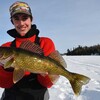
The Eyes Have it
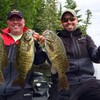
Four Seasons of Bass in Ontario
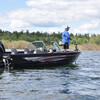
The Best of Both Worlds

Brook Trout Fishing at Dunlop Lake Lodge
Fishing and Foraging
Bronzebacks of the Whalesback

Ten Mile Lake Lodge
